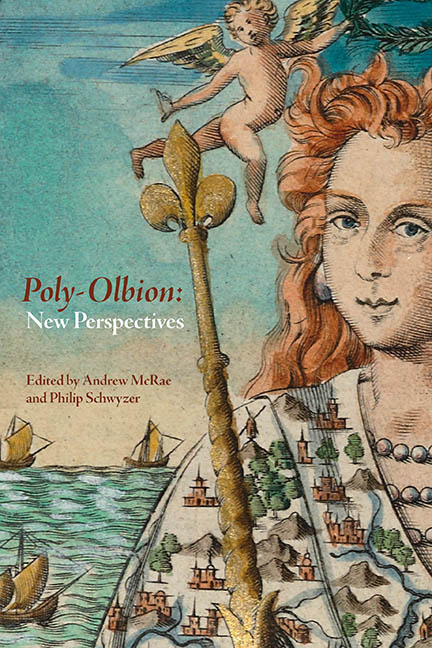4 - Bioregional Visions in Poly-Olbion
Published online by Cambridge University Press: 27 March 2020
Summary
When the first part of Poly-Olbion met with a frosty reception, Drayton and his admirers consoled themselves that the poem was ahead of its time. In his commendatory verses for the second instalment, George Wither issued a resounding prophecy:
Ages to come shall hugg thy POESY,
As we our dear Friends Pictures, when they dye.
Those that succeed us, DRAYTONS Name shall love. …
And our great-Grandsonnes Childrens-children may,
(Yea shall) as in a Glasse, this ISLE survey,
As wee now see it. (p. 395)
In the heyday of Romanticism, Poly-Olbion began to find a few appreciative readers such as William Wordsworth and Charles Lamb, but the forthcoming Oxford edition may mark a watershed in the history of its reception. With the growing popularity of nature writing in America and the United Kingdom, and the rise of environmental humanities in the academy, Wither's prediction no longer sounds so far-fetched. Drayton’s epic now appears not only the fountainhead for topographical poetry but also as the harbinger of an environmental consciousness in English literature. As articles by Sukanya Dasgupta, Sara Trevisan, and Andrew McRae have documented, Poly-Olbion sounded the alarm about the perils of deforestation a half-century before John Evelyn's Sylva. Just as Wither forecasted that unborn historians would consult Poly-Olbion to measure environmental changes, Drayton's account of the Weald was cited in a 2008 report compiled for the Woodland Trust. As befits its prefix, Poly-Olbion is of course many things; it would be a distortion to peg it as exclusively or consistently devoted to conservation. With that caveat in mind, I would nevertheless contend that two of the chief reasons it claims our attention in the twenty-first century are its poeticizing of natural history and its prescient understanding – informed by an antiquarian's sense of deep history – of the long-term impact or ‘slow violence’ of environmental exploitation.
To further make the case for the centrality of Poly-Olbion in the canon of English environmental literature, this chapter investigates the extent to which its poetics dovetail with the philosophy now known as bioregionalism. With its catalogues of the fauna, flora, waterways, and topographical features of each individual county, Drayton's epic depicts the realm not as a homogenous political territory but as a mosaic of distinctive places defined as much by their natural history as human history.
- Type
- Chapter
- Information
- Poly-Olbion: New Perspectives , pp. 89 - 111Publisher: Boydell & BrewerPrint publication year: 2020



